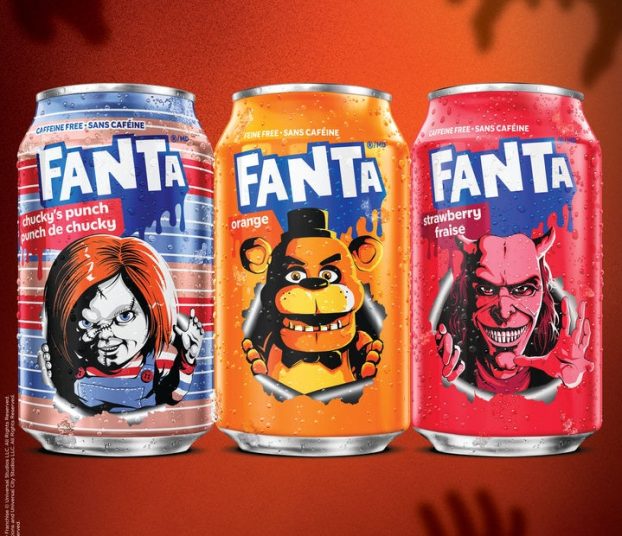You are reading a story from Strategy’s Shopper Marketing Report, which covers the retail partnerships, in-store programs and consumer insights brands are utilizing to influence consumers at the shelf. To have the stories delivered to your inbox every other Wednesday, subscribe to the newsletter.
Natrel introduced its newest product not with a bang, but by smashing a waffle cone to smithereens.
The 15-second spot on YouTube by AOR Lg2 features a traditional scoop of chocolate ice cream sitting atop a cone that is swiftly smashed into tiny little pieces. Then the ball of ice cream is artfully wrapped in a rice dough package.
[iframe_youtube video = “gxOK29diitY”]
Bite-sized mochi ice cream balls can resemble rounded pebbles at first glance, but are actually an edible Westernized twist on traditional Japanese mochi. The popular fresh rice-dough wrapped desserts have been around for centuries and are often filled with red bean paste, or flavoured creams, such as green tea. In recent years, the cold take on this traditional treat has exploded in popularity thanks to a number of factors, including its Insta-worthy look, increased interest in anything Japanese, as well as the small portion size.
“Mochi exists in the United States and, of course, Japan, so we’re not reinventing it. It’s not a world premiere,” explains Philippe Razanakolona, director of new business models and projects at Natrel. “But we’re [one of] the first in Canada to launch a new snacking platform in ice cream. Ice cream has really not seen major innovation in the past 30 years… it’s only recently we saw lower-calories offerings, lower-sugar offerings, which has brought a lot of dynamics into the ice cream category.”
Indeed, one only needs to walk past a freezer aisle these days to see that the frozen dessert category is changing rapidly, thanks in large part to the entry of cult brand Halo Top Creamery last year, as well as a bevy of non-dairy treats such as Yellofruit. Earlier this spring, both Agropur’s Natrel and Loblaw’s President’s Choice (video below) both brought their twists on mochi to Canadian grocery store freezer aisles. Meanwhile, American brands like My/Mo Mochi Ice Cream and Whole Foods Markets’ private label brand sell their takes on the treat at Canadian stores and are often found near the bakery section in standalone branded freezers that have laminated cards dangling from them that explain to customers what the product is. The sweet treat is so new to some Canadians that while Natrel calls its product ice cream mochi, My/Mo uses the more commonly used term, mochi ice cream, whereas Loblaw has simply opted to call it mochi on its packaging, with an explanation right below the name explaining that it’s a “Japanese-inspired ice cream dessert wrapped in a chewy rice dough.”
[iframe_youtube video = “3GX7ZwM5aBY”]
“Trailblazing frozen treats,” including the pretty mochi, were named one of the top 10 food trends for 2019 by Whole Foods earlier this year. And while the product is certainly not new to anyone familiar with Japanese culture, it’s gained steam in recent years. My/Mo Mochi Ice Cream only launched in California in 2017 and is currently America’s fastest growing novelty brand. Natrel has been working on its own version since 2016, when the Agropur company started doing multi-phased market research for what became a Canadianized take (via the use of Canadian dairy), says Razanakolona.
“We did some research country-wide to have a better understanding of how people perceived it and if they knew mochi or not because part of this challenge that we have, or had, was to raise awareness among Canadians on the product,” says Razanakolona. The intensive research by the internal Inno Agropur Program was worth it, as the assumption that this product would only appeal to “millennials who have some awareness of the Asian culinary world” proved wrong, he adds.
“What our research showed was the profile for people who love mochi are the exact same ones as for ice cream. It’s for all ages, it spans all ethnic backgrounds,” says Razanakolona. “We did not think it would be something that would be considered a ‘mass’ product, but that was one of the biggest learnings we got from this research – it was a much wider, and talked to a much wider audience, than the specific target we thought it would.”
That’s in large part because not only is mochi ice cream a trendy treat right now, but it’s also a portion-controlled snackable, convenient item.
“What other categories have seen in terms of food is the entire snacking, portion-controlled, convenience of eating [has become a trend] that ice cream hasn’t really seen,” says Razanakolona . “So what we saw with mochi was the possibility of reinventing how people eat ice cream. It’s a small portion, less than 60 calories, made with premium ingredients and that brings a new texture with the rice that wraps the ice cream.”
Print and video ads by LG2 communicated what mochi is to the masses, but convincing Canadians to literally bite in and try it is key, says Razanakolona. So Natrel hired Vibrant to do “guerilla events” in Toronto and Montreal this spring, resulting in branded ice-cream carts popping up in parks, offices and events for sampling. The brand has also handed out coupons to get people to try to the new product. Meanwhile, Nata PR handled public relations for the product launch.
“Trial is the key element here because it’s something new [to some],” he notes. “A typical reaction is you take a first bite and you’re a bit surprised because you don’t know what to expect… but after one mochi, or for the skeptics it takes about three mochi, people are addicted to it.”
And once Canadians are convinced to buy a box and bring it home, Natrel wanted to ensure that was also an experience.
“The last step is the experience on its own. Once you bring it back home, yes it’s a treat but it’s a treat that wants to be shared,” says Razanakolona. “So people will bring mochis when they have friends over, or when they go to people’s home for a dinner and they’ll plate it nicely. It’s not just the eating experience that we wanted to be unique, we wanted the entire unboxing experience to be unique as well. The box we have… is like a cookie box it unveils the tray that has the mochi inside and [we wanted it] to be inspired by the Japanese way of doing things, not only in the product but in the packaging.”
While the company wouldn’t share specific sales results so far, it is pleased with the warm response to the cold new product so far.
“We’re talking about innovation, and disruptive innovation, so there’s always some risk involved in that,” Razanakolona notes. “It’s part of our strategy of innovation at Agropur and we’re actually very happy with the outcome, of course we’re only halfway through the summer, but sales are exceeding our expectations.”

























